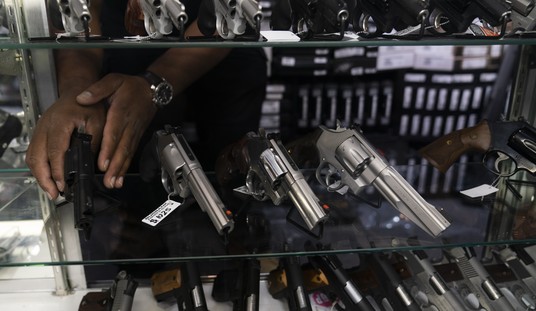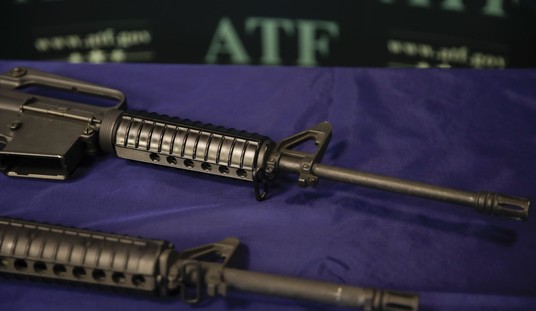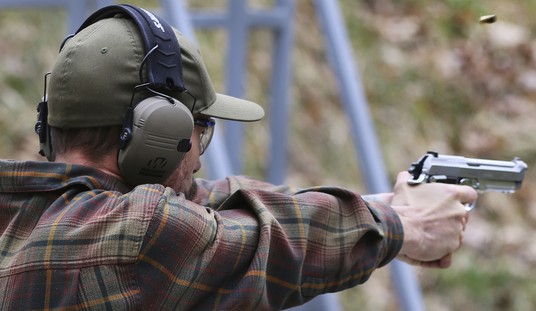In a 6-3 decision, the U.S. Supreme Court has tossed out the ATF's ban on bump stocks imposed during the Trump administration, ruling that the ATF "exceeded its statutory authority by issuing a Rule that classifies a bump stock as a 'machinegun'".
Writing for the majority, Justice Clarence Thomas held that a "semiautomatic rifle equipped with a bump stock is not a machinegun as defined by §5845(b) because: (1) it cannot fire more than one shot 'by a single function of the trigger' and (2) even if it could, it would not do so 'automatically.'"
A semiautomatic rifle equipped with a bump stock does not fire more than one shot “by a single function of the trigger.” With or without a bump stock, a shooter must release and reset the trigger between every shot. And, any subsequent shot fired after the trigger has been released and reset is the result of a separate and distinct “function of the trigger.” All that a bump stock does is accelerate the rate of fire by causing these distinct “function[s]” of the trigger to occur in rapid succession.
While Garland v. Cargill was argued on non-Second Amendment terms, Thomas's opinion may very well end up having an impact on semi-auto bans around the country. The Seventh Circuit Court of Appeals, for instance, has stated that Illinois' ban on so-called assault weapons is likely constitutional because the guns that were banned are "like" machine guns. Cargill makes it clear that, in the eyes of the Supreme Court, there's a distinct difference between semi-automatic firearms and machine guns.
No one disputes that a semiautomatic rifle without a bump stock is not a machinegun because it fires only one shot per “function of the trigger.” That is, engaging the trigger a single time will cause the firing mechanism to discharge only one shot.
Oh, I'd say the Seventh Circuit disputes that fact, but Cargill makes it clear that a "semiautomatic rifle equipped with a bump stock is not a 'machinegun' because it does not fire more than one shot 'by a 'single function of the trigger'. If a rifle equipped with a bump stock isn't a machine gun, then how can a semi-automatic rifle without a bump stock be considered equivalent to a machine gun by the courts?
Writing in dissent, Justice Sonia Sotomayor and her liberal colleagues contend that, even though a bump stock-equipped rifle still functions the same as one without a bump stock, attaching the non-mechanical device magically turns a semi-auto into a machine gun.
When I see a bird that walks like aduck, swims like a duck, and quacks like a duck, I call that bird a duck. A bump-stock-equipped semiautomatic rifle fires “automatically more than one shot, without manual reloading, by a single function of the trigger.” §5845(b). Because I, like Congress, call that a machinegun, I respectfully dissent.
Again, though, attaching a bump stock doesn't change the function of the trigger at all. From Thomas's majority opinion:
Firing multiple shots using a semiautomatic rifle with a bump stock requires more than a single function of the trigger. A shooter must also actively maintain just the right amount of forward pressure on the rifle’s front grip with his nontrigger hand. See supra, at 2–3. Too much forward pressure and the rifle will not slide back far enough to release and reset the trigger, preventing the rifle from firing another shot. Too little pressure and the trigger will not bump the shooter’s trigger finger with sufficient force to fire another shot. Without this ongoing manual input, a semiautomatic rifle with a bump stock will not fire multiple shots. Thus, firing multiple shots requires engaging the trigger one time—and then some.
This is a big win for Michael Cargill and every other American who potentially faced prison time for possessing a bump stock after the ATF's administrative ban, but I'd say it's also likely to have an impact on semi-auto bans, even if those prohibitions weren't directly referenced in the opinion.
Today's decision is also going to have major political ramifications. In his concurrence, Justice Samuel Alito said there's a "simple remedy for the disparate treatment of bump stocks and machineguns."
Congress can amend the law—and perhaps would have done so already if ATF had stuck with its earlier interpretation. Now that the situation is clear, Congress can act.
The Supreme Court has had the final say on the ATF's rule, but that doesn't mean it will be the last word on bump stocks in D.C. Get ready for the left to make bump stocks a campaign issue. We can expect to see Democrats file legislation to ban bump stocks in a matter of days, if not hours.
Joe Biden will undoubtedly push for Congress to enact a ban, but what will Trump do? The ATF banned bump stocks under his watch, so will he endorse a legislative ban as well? Trump has told NRA members that their Second Amendment rights will be safe with him in the White House. If he does decide to oppose a legislative ban, he's going to have to explain why he supported an administratively imposed bump stock ban in 2018 but is against Congress doing the same in 2024.









Join the conversation as a VIP Member